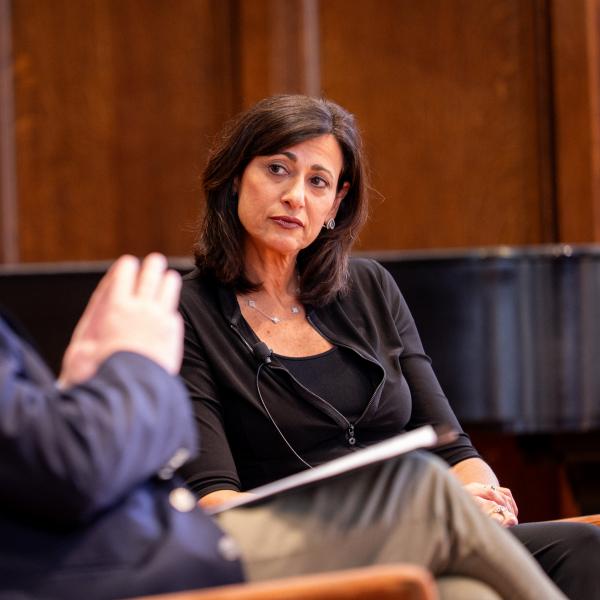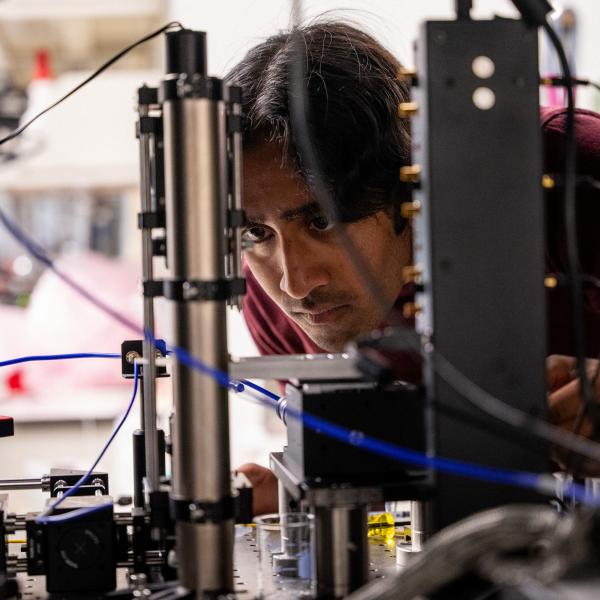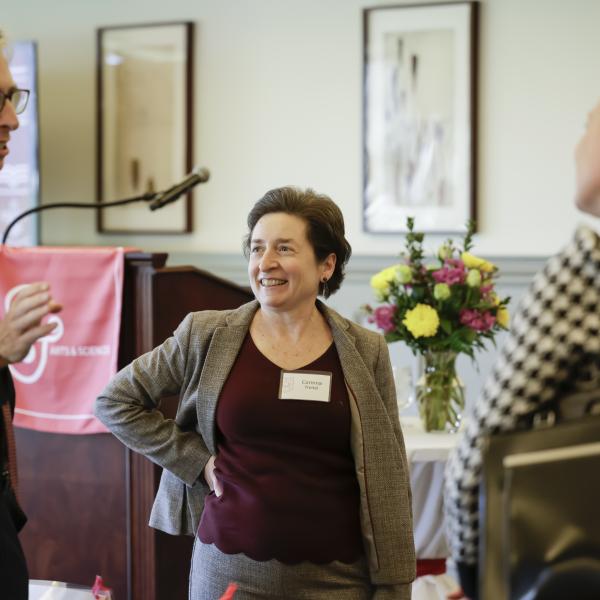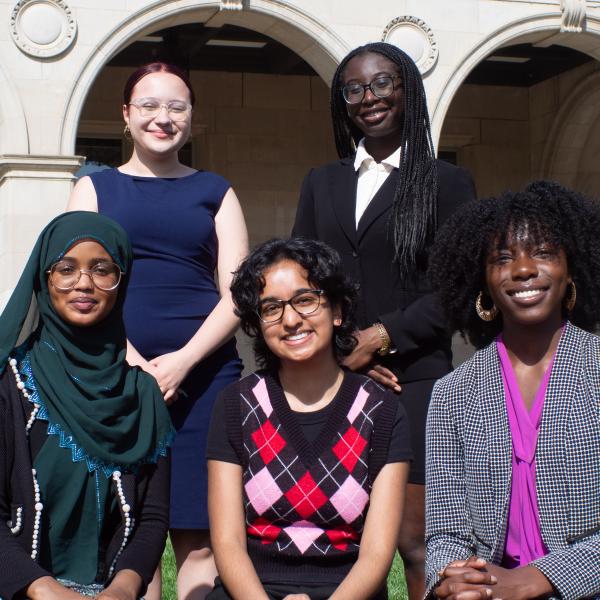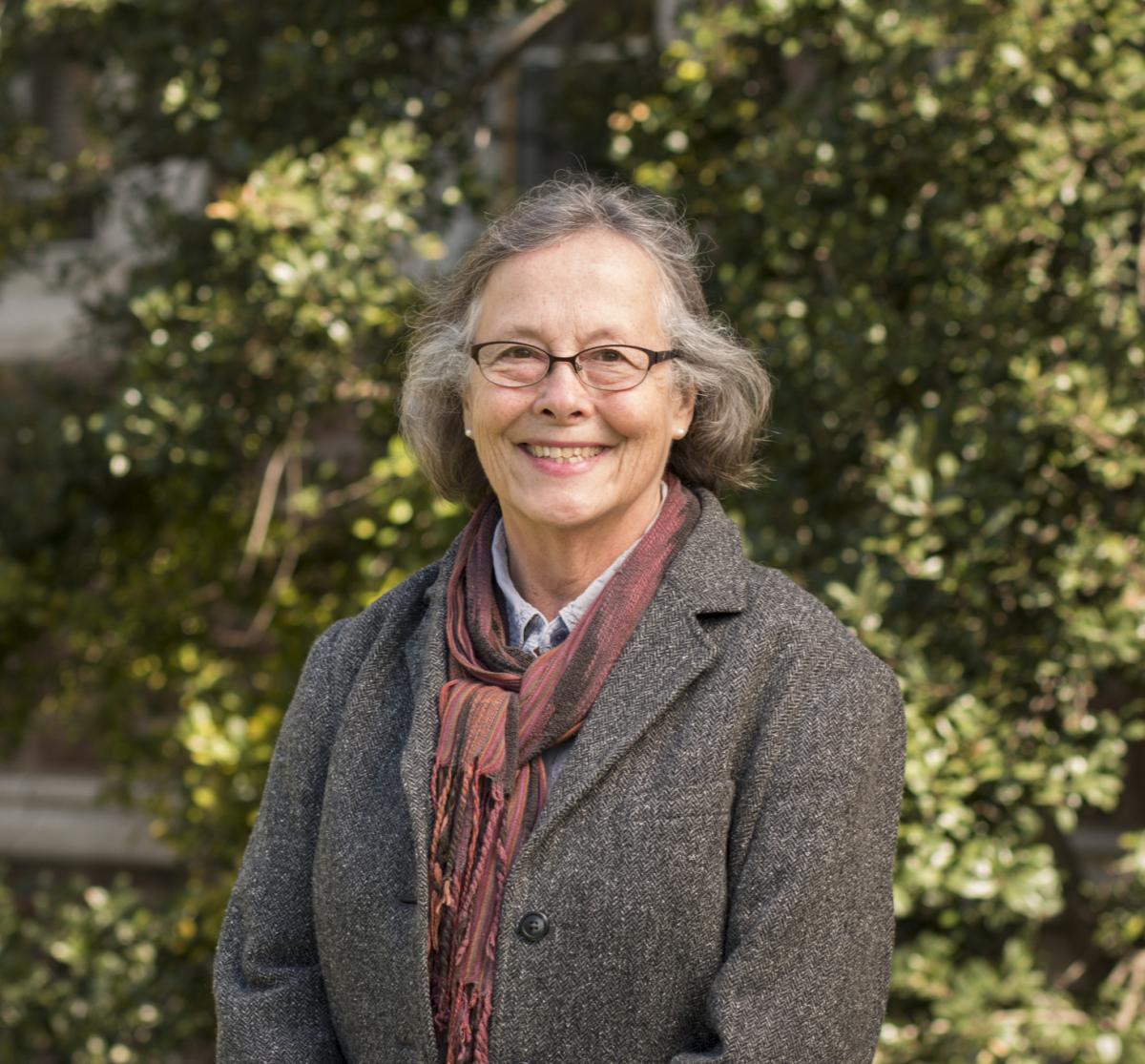
Lately, terms like “fake news” and “click bait” have made their way into the national conversation as leaders and political pundits call into question whether what we read or hear in the media is true. But this problem is hardly new for Gayle Fritz and David Freidel, both professors of archaeology in the Department of Anthropology at Washington University in St. Louis.
“I began to dread riding on airplanes,” says Gayle Fritz. The situation is familiar enough to anyone who’s traveled by air. A seatmate looks over to strike up small talk with a question like, “What do you do?”
“‘I teach archaeology,’ I’ll say. Or ‘I’m an archaeologist,’ Fritz responds. “And then they say, ‘Oh, wow! I’ve always been fascinated with archaeology.’ And then the trouble begins because they start asking me questions about aliens who built the pyramids, or where Atlantis is, and things like that.”
Fritz pauses. “It makes you realize very quickly that the public is just pervaded by pseudo-archaeology and myths about archaeology, some of which are hoaxes and some of which just go way back to the founding of the United States.”
Public Misunderstanding
“When we teach in a public setting, which we do regularly because archaeology is of interest to the American public,” says David Freidel, “we get the kinds of questions that Gayle shared, and it’s important that we try to be public educators. When we are peer-reviewed for a research publication, we are always asked, ‘What is your target audience? How are you disseminating your information?’ So, we’re always thinking about these things.”
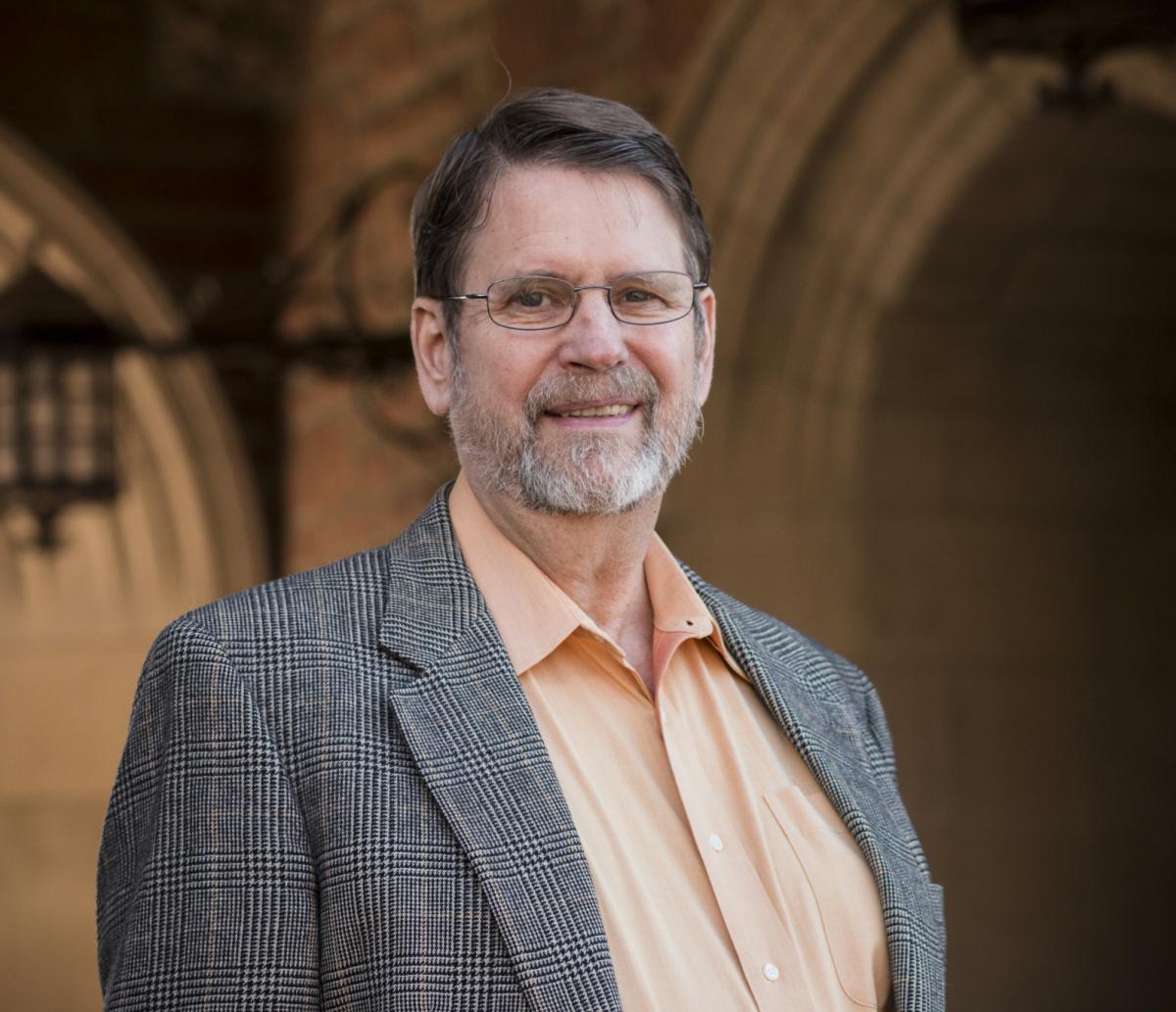
Experiences like these led Fritz to start a course at WashU called “Fantastic Archaeology,” and David Freidel, who had been teaching a course on the same topic at another university, offered to co-teach it with her when he came to the university in 2008. They’ve been co-teaching the course every fall semester since, though the title of the course has evolved much over the years, eventually settling on “Archaeological Fantasies and Hoaxes.”
“It’s a bait-and-switch class,” says Freidel. “I think it’s important for college students to learn to be discriminating in how they absorb information. I’m of the view that you don’t get to wisdom very easily, but just getting to knowledge from information is very difficult, actually. It requires a certain discipline of mind, which is what students learn here.”
“As a more general problem, most of the information the public is getting about archaeology and the past is deeply informed by public culture, which includes a lot of misinformation,” says Freidel. “So, it’s a balancing act in the course, to keep it engaging and, at the same time, to challenge the students to think clearly about the nobility of being skeptical. It’s important to be skeptical. Not just in this course, but in everything. That is not cynical; it means being careful about what one accepts as assertion of fact out there in the real world.”
Fritz adds, “It can be very subtle, too. I think all of our students know the ancient aliens shows are a bunch of hype, but they don’t realize that even some of the information they find on the National Geographic website, or on the Nat Geo or History channels, or some of the more entertainment-oriented programs, also need to be evaluated very critically.”
“It’s important to be skeptical... That is not cynical; it means being careful about what one accepts as assertion of fact out there in the real world.”
So what myths do they get asked about the most? Which ones drive them the most crazy? From aliens and Atlantis to Indiana Jones, Gayle Fritz and David Freidel discuss why these hoaxes and fantasies are so harmful.
Myth #1: Ancient Aliens
“A couple years ago when I was reading that the hook of the new Indiana Jones movie was going to have something to do with aliens, it was like, ‘No!! No! Why did it have to be aliens?’” says Fritz. “Like Indiana Jones says, ‘Why did it have to be snakes?’” She admits that UFO sightings and E.T. don’t bother her so much, but she says, “When civilizations of the past are denied the credit of their achievements, and it’s instead awarded to ancient aliens, that’s probably what annoys me the most.”
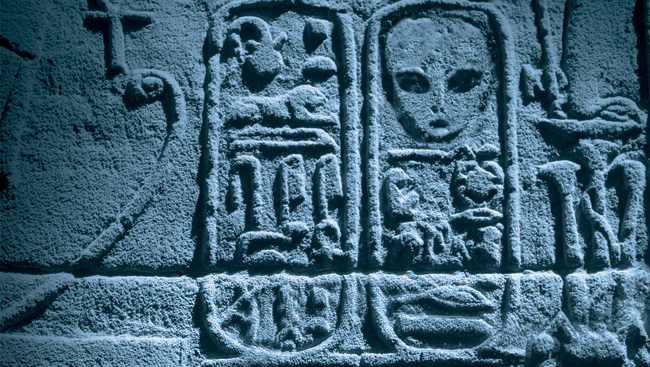
Freidel is in total agreement. “I think it’s very frustrating that people find stories about ancient aliens making the pyramids of Egypt or Tiwanaku, or moving the great sculptures of Easter Island, so compelling. What people don’t take into account is what these assertions of ‘ancient aliens’ say about human beings—what we’re capable of and what we actually achieved. It’s so important in our field of archaeology that people take into consideration our long history. People seem to think that anything that didn’t happen in the last 10 years is not relevant, and that is absolutely not true. We have to explain exactly why we think such assertions of fantasy about the past are degrading of our knowledge.”
Myth #2: Indiana Jones, a Curse and a Blessing
The problems archaeologists have with the Indiana Jones series go far beyond just the latest installment’s use of ancient aliens. Freidel recalls, “My professor Gordon Willey at Harvard disliked Raiders of the Lost Ark intensely. The reason being that he was of that generation. He was actually an archeologist in the 30s, 40s, and 50s, and so for him, it was not okay to be caricatured in this way. The film did not show what archaeologists did. They did not go out and find prized artifacts and take them and run away. That is looting, not archaeology.”
“Incidentally, the opening scene shows Indiana Jones grabbing a golden idol off the altar,” Freidel says. “That’s actually a real jade artifact in the Dumbarton Oaks research library in Washington D.C., and it’s an image of the Aztec goddess Tlazolteotl. It’s a real piece of work, but it’s also an unprovenanced piece of work that was not found in good archaeological context. It was looted.”

“The issue of looting is a fundamental one for us in the field,” says Freidel. “What do we do with unprovenanced artifacts? How do we think about them when our museums today are full of looted artifacts? We teach Indiana Jones very carefully to make it clear that we’re not okay with looting.”
However, Fritz is quick to point out that Indiana Jones has done some good for the field, too. The films have brought a lot of publicity and inspired more students to foray into archaeology as part of their studies. But when they come to class expecting more Steven Spielberg-sized capers, Fritz says they are in for a rude awakening. “Some students are disappointed when they realize I’m nothing like Indiana Jones or Lara Croft,” she says, “and they find it more boring than they expected. But others get bit by the bug, and they say, ‘Well it’s different than I thought it’d be. There’s no whips. But still it’s cool.’”
“I think quite a few archeologists would not be in the field if it hadn’t been for Indiana Jones, and that’s a good thing,” she says. “We have to acknowledge that. Harrison Ford himself has made public service announcements that are anti-looting and that are pro-professional archaeological level of research.”
“The issue of looting is a fundamental one for us in the field.”
Myth #3: The Barbaric Natives and European Superiority
Compared to ancient aliens, the racism many cultures have been subjected to in archaeology’s history is much more insidious and persistent. In the course, Freidel uses Mel Gibson’s 2006 film Apocalypto to illustrate this point. Freidel is an expert on the Maya, and specifically studies the emergence and expansion of government institutions among the lowland Maya of southeastern Mexico and Central America, so he had heard about the film before it was released. In fact, he agreed to review the film for Archaeology Magazine.
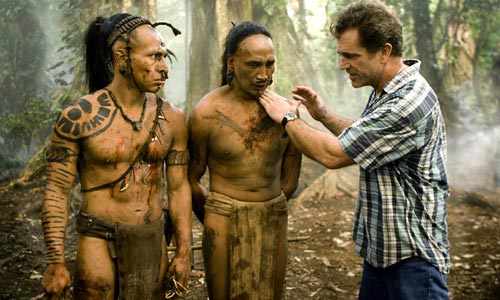
“I was going to review it with a group of Maya-speaking people in Yucatan, but I couldn’t get an advance copy of the film to show it to them and get their reactions right away,” he says. “I’m glad in the end that I didn’t do that, because this film is a profoundly racist vision of the people that I’ve devoted my career to studying. Apocalypto is pseudo-history. Mel Gibson was trying to make audiences think it was authentic by having the actors speak in Yucatan and dress in historical garb, but it’s not. It’s a totally racist apologia for the conquest of these people by European Christians. It is a deeply disturbing film in that way.”
“I mean, I suppose it can be regarded as an entertaining film,” Freidel says, “but I taught it as a racist film. I just said right at the beginning of the presentation, ‘Racism is un-American.’ And the students understood where I was coming from. But racism is a foundational cultural issue. It’s real. And by not talking about it, we aren’t doing anybody any favors. We have to in fact talk about it clearly in my view, in the classroom.”
Just this semester, Fritz and Freidel’s class came face-to-face with this Western bias in an emerging news story: one researcher presented the theory that the Terra Cotta Warriors in China had actually been inspired by Greek sculpture.
Fritz explains, “In the course, we ask students to follow archaeology news, and one of the big stories this semester was the allegation that the Terra Cotta Warriors in China had been inspired by the Greeks. The theory was based on the fact that some European DNA had been discovered in a burial site thousands of kilometers to the west of the Terra Cotta Warriors. So they claimed, ‘Look, the Europeans were here. The Greeks could have inspired the Terra Cotta Warriors.’ And our students really picked up on that. Like, ‘Why would you say that? Why would you claim this diffusion? Not that people weren’t getting around, but what is the evidence for this?’ After a thorough discussion, we came away with a consensus that we would like to see a lot more evidence, and that we’re very skeptical of the denying of the Chinese the credit for having made this artistic leap themselves.”
“Racism is a foundational cultural issue...And by not talking about it, we aren’t doing anybody any favors. We have to in fact talk about it clearly in my view, in the classroom.”
Myth #4: The Mound-Builders
These racist interpretations of the past have long roots and hit close to home here in St. Louis, Missouri, just miles from Cahokia Mounds State Historic Site, the largest and most complex archaeological site north of the great pre-Columbian cities in Mexico. Hundreds of mounds once filled the area as remnants from the Mississippian tribes that once flourished here, but now, only a handful remain.
Fritz says, “Until the 1890s, most Americans, including members of the St. Louis Academy of Sciences and learned people across the world, believed that there had been a non-Native-American mound-builder race. And that was inherently a racist notion that the Native Americans were too savage, too barbaric, and too lazy to have built the Mississippian mounds and all the other spectacular mounds in eastern North America. You can get quotes from all over the place that the Native Americans were incapable. There was even a state geologist of Illinois who wrote that the mounds were natural glacial features and that they had nothing to do with Native Americans. So that’s a very solid example of racism.”

“That’s a myth that is never going to, I think, be completely cleansed in the United States. We saw a lot of diffusion notions that give credit to Old World societies for New World accomplishments. It wasn’t until the Smithsonian sent out a big group of researchers that demonstrated through excavation and archival work that the ancestors of the Native Americans, the people who lived here, were the builders of these mounds,” she says.
Freidel adds, “Human beings have a universal capacity for imagination, creativity, ingenuity—and this is foundational to anthropology. It is an idea as fundamental as evolution, and it’s one we have to reiterate constantly because human beings tend to distinguish among themselves and think that because they look different, or come from different places, or have different values, cultures, or beliefs that somehow they are intrinsically superior or inferior to others. And this is a fundamental flaw in thinking that we have to address. We never get to stop protesting it.”
“Diffusion is important because, on the one hand, it’s real. People do move ideas and technologies all over the place. The reason that cities all over the world look pretty much the same now is because of the fusion of certain understandings of technology and style,” he says. “But at the same time, we have so many different, wonderful, creative things to contribute to world culture, that having respect for other people’s ways of doing things, having respect for the traditions that they’ve created over long periods of times, is really essential to survival on the planet today. This is not something secondary or superfluous. This is what we must have if we’re going to survive on the planet. And so that’s an issue, a theme that we have to come back to continually in a course like this.”
“Human beings have a universal capacity for imagination, creativity, ingenuity—and this is foundational to anthropology. It is an idea as fundamental as evolution...”
Myth #5: Atlantis, or The Lost Civilization
Since Plato first wrote of the island of Atlantis millennia ago, the idea of a lost civilization of an advanced and powerful people has seduced even seemingly learned minds, like Francis Bacon and Thomas More. But the myth is just that, Freidel says. An idea.
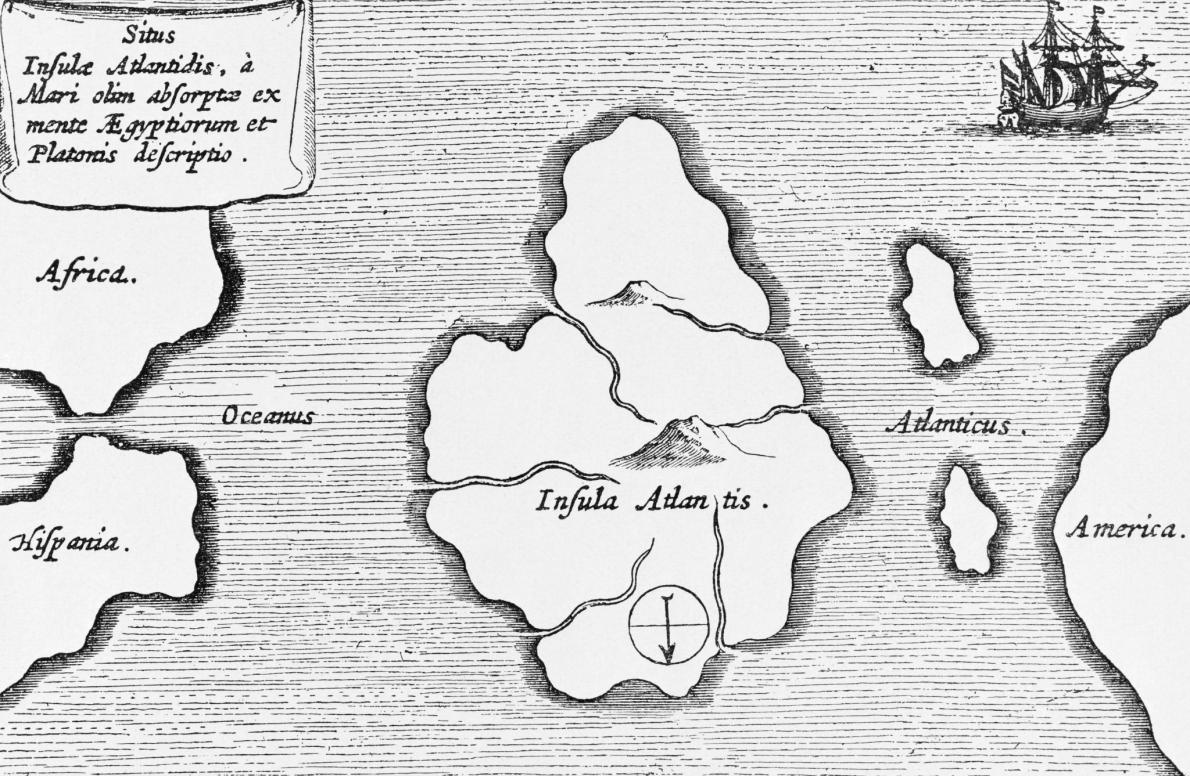
“The whole notion of human evolution, that we went from relatively simple societies to the complicated and large-scale societies of today, is mystifying to a lot of people,” Freidel says. “They don’t see how it could ever happen, so they have to attribute the change to some extremely superior group of people. And this notion is a really powerful idea. It’s a touchstone idea that they come back to it again and again. A lot of very serious-minded, very bright, and accomplished people have asked me sincerely about Atlantis.”
“I’ve met a number of people who believe they had a previous life in Atlantis,” says Fritz.
Beyond explaining advances in culture, Freidel says Atlantis has also been used to justify some of the worst racism our world has seen. “Nazi national socialists embraced the idea of Atlantis because notions of a superior race, a supreme race, are foundational to it. Modern charlatans like Heinrich Himmler and the SS spent significant time towards discovering the relics of Atlantis, which is of course where Lucas and Spielberg got their idea for Raiders of the Lost Ark.”
Understanding Our Past to Face the Future
In the Age of Information—and Misinformation—Gayle Fritz and David Freidel share the ideas that they wish people would really understand about archaeology.
Fritz says, “The issues that we grapple with and the questions that we try to answer are as compelling and as exciting as any of the pseudoscientific claims. Our work has the potential to contribute to modern day problems, like climate change and agriculture, and our work shows that human societies and human beings are intelligent and creative, with or without outside influence from the most famous centers of civilization. People have come up with fabulous ideas, architecture, art, and solutions for the problems they face, without destroying the environment.”
“The past really is a guide to the future...[and] projecting fantasy onto the past is just an excuse for projecting it onto the future.”
For Freidel, the lessons of archaeology are urgent and more pressing than ever. “The past really is a guide to the future. This is true in everything that we do in field research and science; everything we know is a result of observing what has happened already. We can only predict what’s going to happen. So knowing the past is the basic survival kit for surviving into the future. Knowing about the past means you’re going to be better able to anticipate what’s going to happen next.”
“Projecting fantasy onto the past is just an excuse for projecting it onto the future, and projecting dystopia onto the future, catastrophic future, is no help any either. What we have to have are clear-eyed plans for how to adapt to the circumstances we are creating for ourselves,” he says. “So I don’t have any ‘click bait’ for this kind of issue. But it’s not enough to either be frightened or apathetic. We have to plan and make an effort to survive.”

